Ex-1:
Do the following activities.
(i) Draw the graphs of the parabolas (𝑦−𝑘)2=4𝑎(𝑥−ℎ) and (𝑥−ℎ)2=4𝑎(𝑦−𝑘) for the given values of 𝑎,𝑏,ℎ and 𝑘. Determine the vertex, focus, axis, directrix, latus-rectum of each parabola and mark them on the graphs.
(ii) Draw the graphs of the ellipse (𝑥−ℎ)2𝑎2+(𝑦−𝑘)2𝑏2=1 for the given values of 𝑎,𝑏 ,ℎ and 𝑘. Determine the eccentricity, centre, foci, vertices, major axis, minor axis, directrices, and latus-rectums and mark them on the graph.
Ex-2:
Do the following activities for the given image of a parabolic shaped satellite dish antenna.
(i) Draw a parabola which fits the given image of the dish antenna.
(ii) Write the equation of the parabola.
(iii) Find the vertex, focus, directrix and latus-rectum and mark them on the graph.
(iv) How far from the vertex should the receiver of the antenna be placed?
Ex-3:
Do the following activities.
i. Draw the graphs of sin𝑥,cos𝑥,tan𝑥,cosec𝑥,sec𝑥 and cot𝑥 and write their domain and range. Find the maximum value, minimum value, amplitude and periodicity of sin𝑥,cos𝑥,tan𝑥,cosec𝑥,sec𝑥 and cot𝑥.
ii. Draw the graphs of sin−1𝑥,cos−1𝑥,tan−1𝑥,cosec−1𝑥,sec−1𝑥 and cot−1𝑥 and write their domain and range. Find the maximum value and minimum value of sin−1𝑥,cos−1𝑥,tan−1𝑥,cosec−1𝑥,sec−1𝑥 and cot−1𝑥.
Ex-4:
The alternating current passing through a circuit is 𝑖(𝑡)=𝐼𝑚sin𝜔𝑡, where 𝐼𝑚 is the maximum value of current and 𝜔 is the angular velocity. Let 𝑅 be the resistance and 𝑉𝑚 be the maximum voltage.
i. Graph the sinusoidal waveform of 𝑖(𝑡) for the given values of 𝐼𝑚 and 𝜔.
ii. Calculate the maximum voltage 𝑉𝑚 using the formula 𝑉𝑚=𝐼𝑚𝑅 for the given value of 𝑅.
iii. Graph the sinusoidal waveform of voltage using the formula 𝑣(𝑡)=𝑉𝑚sin(𝜔𝑡+𝜋2).
iv. Determine the value of root mean square (r.m.s) current.
v. Determine the frequency.
vi. Calculate the instantaneous value of the current at 𝑡 sec.
Ex-5:
Do the following activities.
i. Mark the given complex number 𝑧 on the Argand plane. Find the real and imaginary parts of 𝑧. Find the distance of 𝑧 from 𝑥-axis and relate it to the real part of 𝑧. Find the distance of 𝑧 from 𝑦-axis and relate it to the imaginary part of 𝑧.
ii. Find the conjugate of 𝑧. Mark 𝑧̅ on the Argand plane. Find the reflection of 𝑧 on 𝑥-axis and relate it to 𝑧̅.
iii. Find the modulus of 𝑧. Find the distance between 𝑧 and origin of the Argand plane and relate it to the modulus of 𝑧. Find the modulus of 𝑧̅ and relate it to the modulus of 𝑧.
iv. Find the argument of 𝑧. Find the angle between the line segment 𝑂𝑧 and 𝑥 axis and relate it to the argument of 𝑧. Find the argument of 𝑧̅ and relate it to the argument of 𝑧.
Ex-6:
Do the following activities.
i. The representation of apparent power as phasor sum of active power and reactive power is given by 𝑆=550+952.63𝑗. Draw the phasor diagram of the system. Find the numerical value of the apparent power. Also calculate the phase angle and power factor of the system.
ii. A machine takes 10KW (real power, P) at a power factor of 0.6 from 400V supply. Calculate the total load in KVA and KVAR. Represent the apparent power as a phasor sum of active power and reactive power.
Ex-7:
Do the following activities.
(i) Graph the polynomial function 𝑓(𝑥)=𝑎𝑛𝑥𝑛+𝑎𝑛−1𝑥𝑛−1+⋯+𝑎1𝑥+𝑎0, where 𝑎𝑛,𝑎𝑛−1,…,𝑎0 are real numbers and 𝑎𝑛≠0. Find the value of 𝑓(𝑥) at 𝑥=𝑎 and the limit of 𝑓(𝑥) at 𝑥=𝑎.
(ii) Graph the rational function 𝑅(𝑥)=𝑎𝑛𝑥𝑛+𝑎𝑛−1𝑥𝑛−1+⋯+𝑎1𝑥+𝑎0𝑏𝑚𝑥𝑚+𝑏𝑚−1𝑥𝑚−1+⋯+𝑏1𝑥+𝑏0, where 𝑎𝑛,𝑎𝑛−1,…,𝑎0,𝑏𝑚,𝑏𝑚−1,…,𝑏0 are real numbers and 𝑎𝑛,𝑏𝑚≠0. Find the value of 𝑓(𝑥) and the limit of 𝑓(𝑥) at 𝑥=𝑎.
(iii) Graph the functions sin𝑎𝑥𝑏𝑥 and tan𝑎𝑥𝑏𝑥 where 𝑎 and 𝑏 are real numbers and 𝑎,𝑏≠0. Evaluate lim𝑥→0sin𝑎𝑥𝑏𝑥 and lim𝑥→0tan𝑎𝑥𝑏𝑥.
(iv) Graph the functions 𝑐 (𝑐𝑜𝑛𝑠𝑡𝑎𝑛𝑡), 𝑥𝑛, sin𝑥, cos𝑥, tan𝑥, cosec𝑥, sec𝑥, cot𝑥, 𝑒𝑥 and log𝑥. Find their first derivative and second derivative.
Ex-8:
The alternating current passing through a circuit is 𝑖(𝑡)=𝐼𝑚sin𝜔𝑡 where, 𝐼𝑚 is the maximum value of current and 𝜔 is the angular velocity. Let 𝐿 be the inductance.
(i) Graph the sinusoidal wave form of 𝑖(𝑡) for the given values of 𝐼𝑚 and 𝜔.
(ii) Graph the voltage using the formula 𝑣(𝑡)=𝐿𝑑𝑖(𝑡)𝑑𝑡 for the given value of 𝐿.
(iii) Determine the values of 𝑖(𝑡) and 𝑣(𝑡) for a fixed 𝑡 and different values of 𝜔.
(iv) Determine the values of 𝑖(𝑡) and 𝑣(𝑡) for fixed value of 𝜔 and different values of 𝑡.
(v) Determine the values of 𝑡 for which 𝑖(𝑡) and 𝑣(𝑡) are equal.
Ex-9:
Do the following activities.
i. Graph the functions 𝑐 (𝑐𝑜𝑛𝑠𝑡𝑎𝑛𝑡), 𝑥𝑛,𝑛∈ℝ, 𝑒𝑥, sin𝑥, cos𝑥, sec2𝑥, cosec2𝑥, sec𝑥tan𝑥 and cosec𝑥cot𝑥. Find their indefinite integrals.
ii. Evaluate the definite integral ∫𝑓(𝑥)𝑏𝑎𝑑𝑥 and relate it to the area under the curve 𝑦=𝑓(𝑥) between 𝑥-axis, 𝑥=𝑎 and 𝑥=𝑏.
iii. Find the volume of the solid generated by the revolution of the area bounded by 𝑦=𝑓(𝑥),𝑥-axis, 𝑥=𝑎 and 𝑥=𝑏 about 𝑥-axis.
Ex-9:
Do the following activities.
i. Graph the functions 𝑐 (𝑐𝑜𝑛𝑠𝑡𝑎𝑛𝑡), 𝑥𝑛,𝑛∈ℝ, 𝑒𝑥, sin𝑥, cos𝑥, sec2𝑥, cosec2𝑥, sec𝑥tan𝑥 and cosec𝑥cot𝑥. Find their indefinite integrals.
ii. Evaluate the definite integral ∫𝑓(𝑥)𝑏𝑎𝑑𝑥 and relate it to the area under the curve 𝑦=𝑓(𝑥) between 𝑥-axis, 𝑥=𝑎 and 𝑥=𝑏.
iii. Find the volume of the solid generated by the revolution of the area bounded by 𝑦=𝑓(𝑥),𝑥-axis, 𝑥=𝑎 and 𝑥=𝑏 about 𝑥-axis.

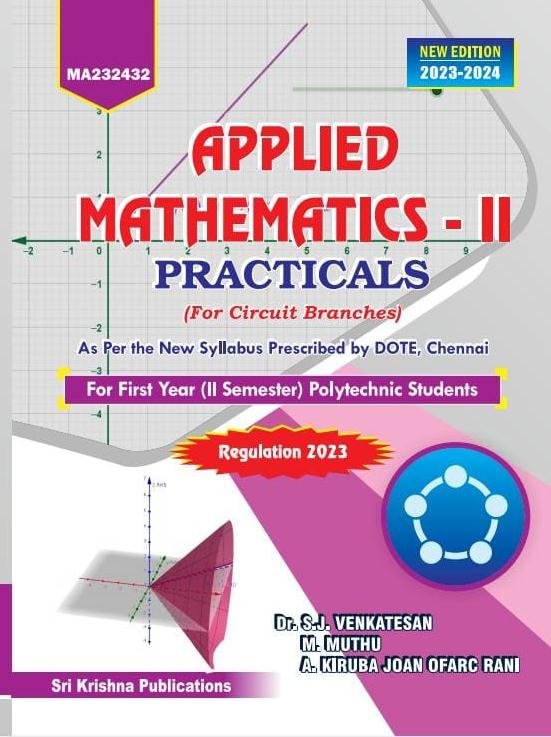

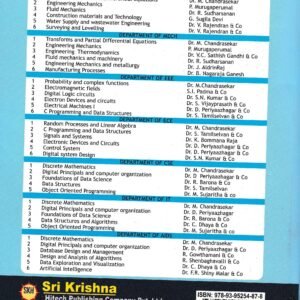

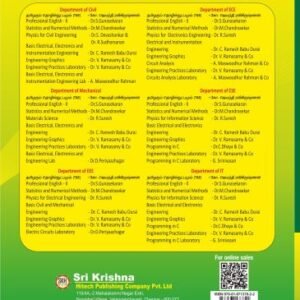




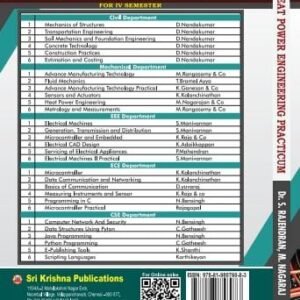
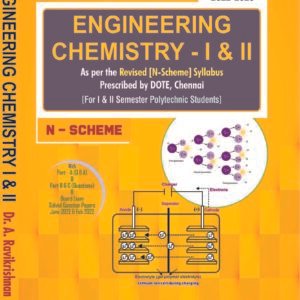
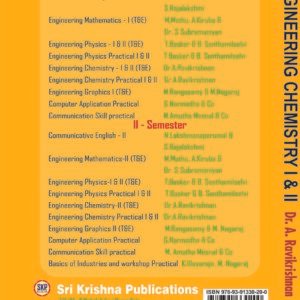
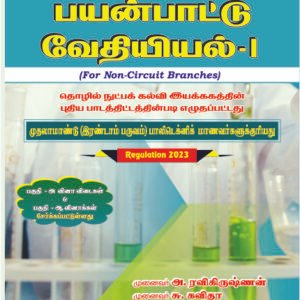

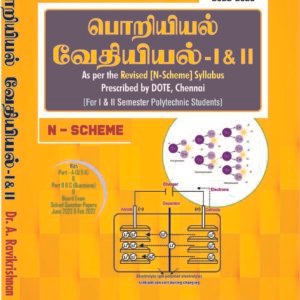


Reviews
There are no reviews yet.